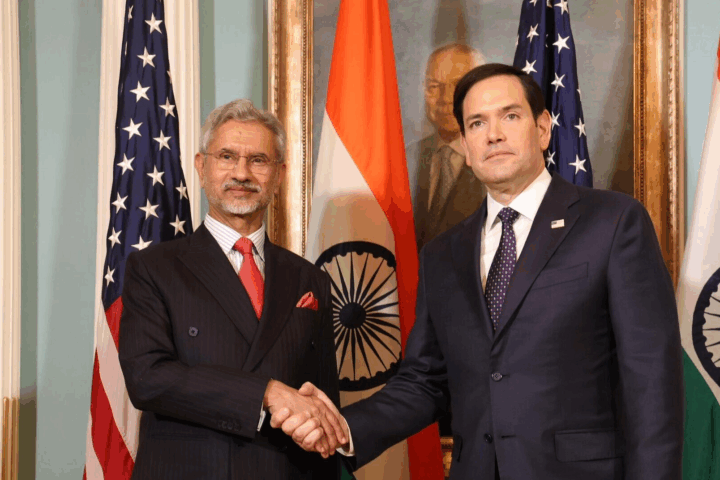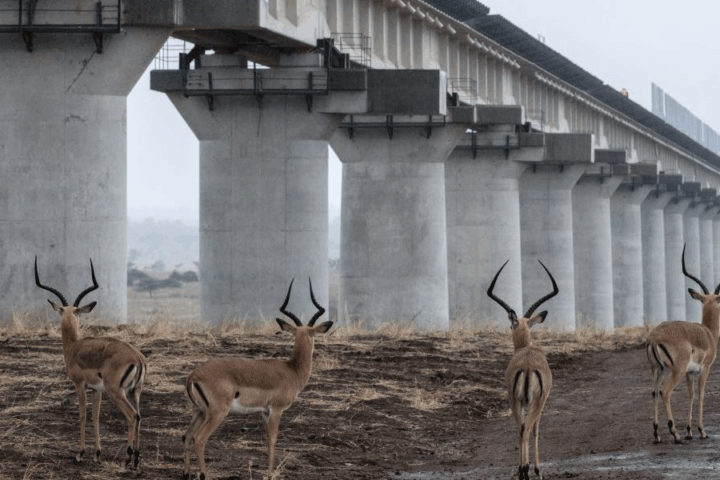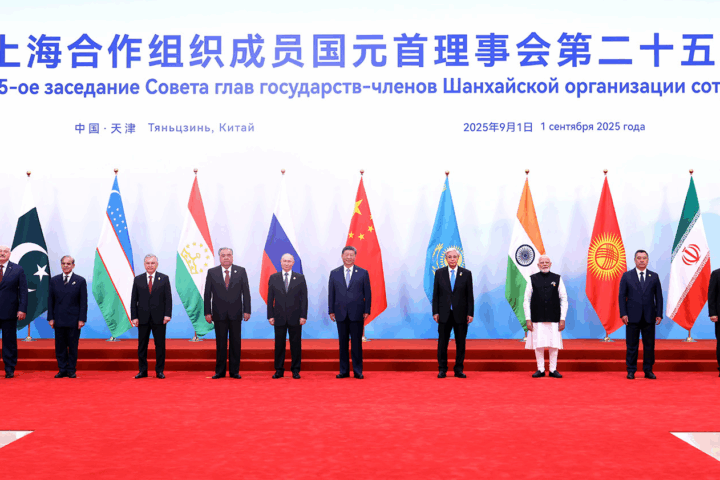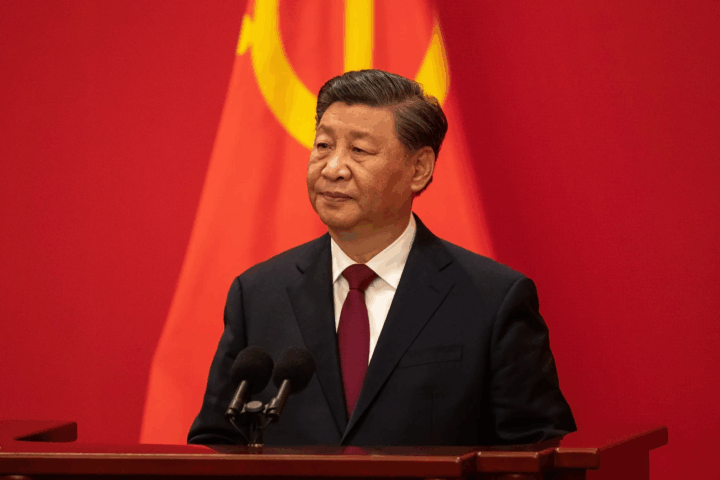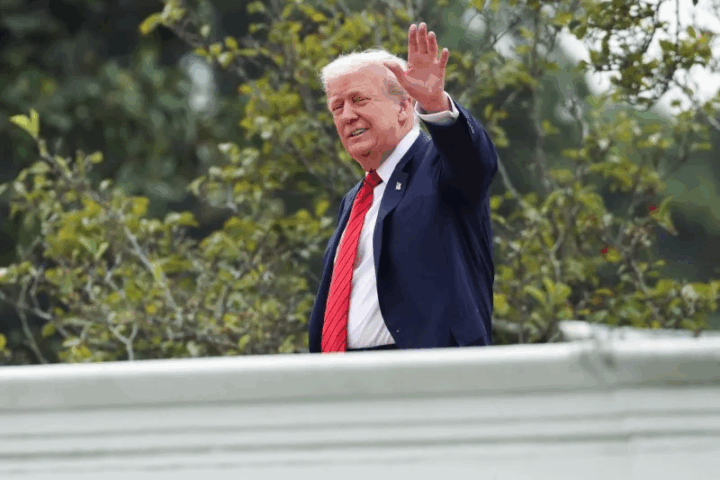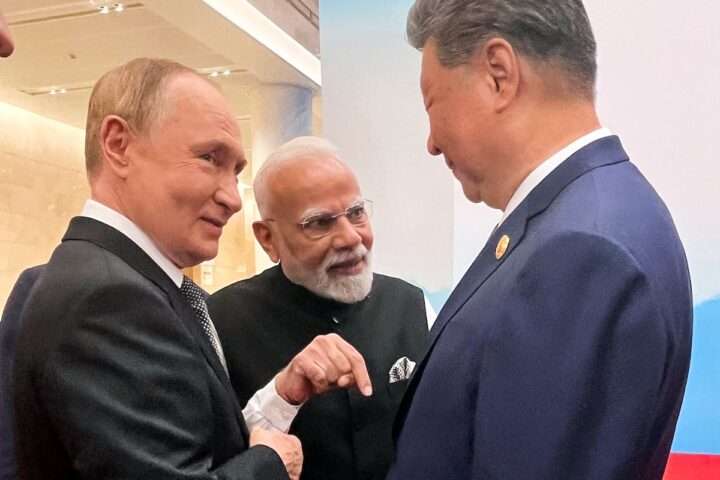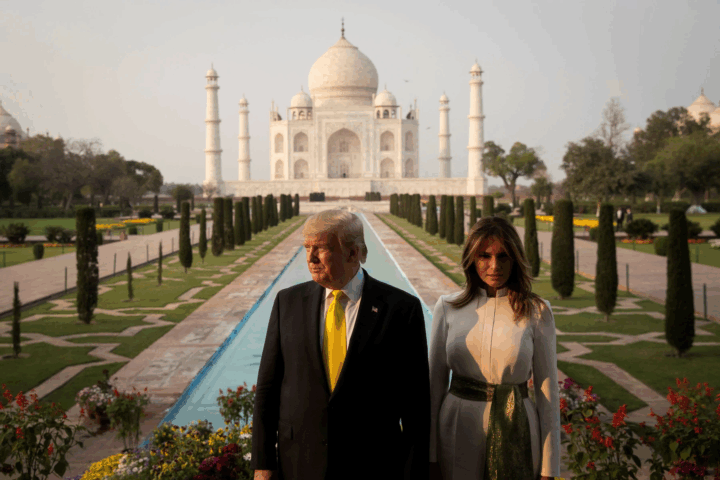On the misty morning of April 22, 2025, the lush Baisaran Valley near Pahalgam — often called “Mini-Switzerland” — became the site of one of the most chilling massacres in Kashmir’s troubled history. Gunmen stormed a group of unarmed tourists, killing 26 people in cold blood. Survivors recounted horrifying tales: victims were interrogated about their religion, forced to recite Islamic verses, and executed point-blank if they failed (CNN, April 24, 2025).
The Resistance Front (TRF), a Pakistan-backed terror outfit, promptly claimed responsibility, citing anger over alleged “demographic changes.” The attack’s religiously targeted brutality bore all the hallmarks of Islamist terror. Yet, while India mourned, much of the Western media busied itself with an even darker endeavor — the soft-pedaling, the whitewashing, and ultimately, the erasure of a mass killing from moral memory.
When “Terrorists” Become “Gunmen”
Language is never neutral. Every word carries weight, shaping perception, evoking sympathy, or dulling outrage. In the case of the Pahalgam massacre, the Western media’s linguistic choices were revealing — and damning.
CNN, Reuters, the Associated Press, BBC, and The New York Times uniformly described the attackers as “gunmen,” “militants,” or “rebels.” Rarely was the term “terrorist” employed, and when it was, it appeared either in quotation marks or attributed to the Indian police (Firstpost, April 2025).
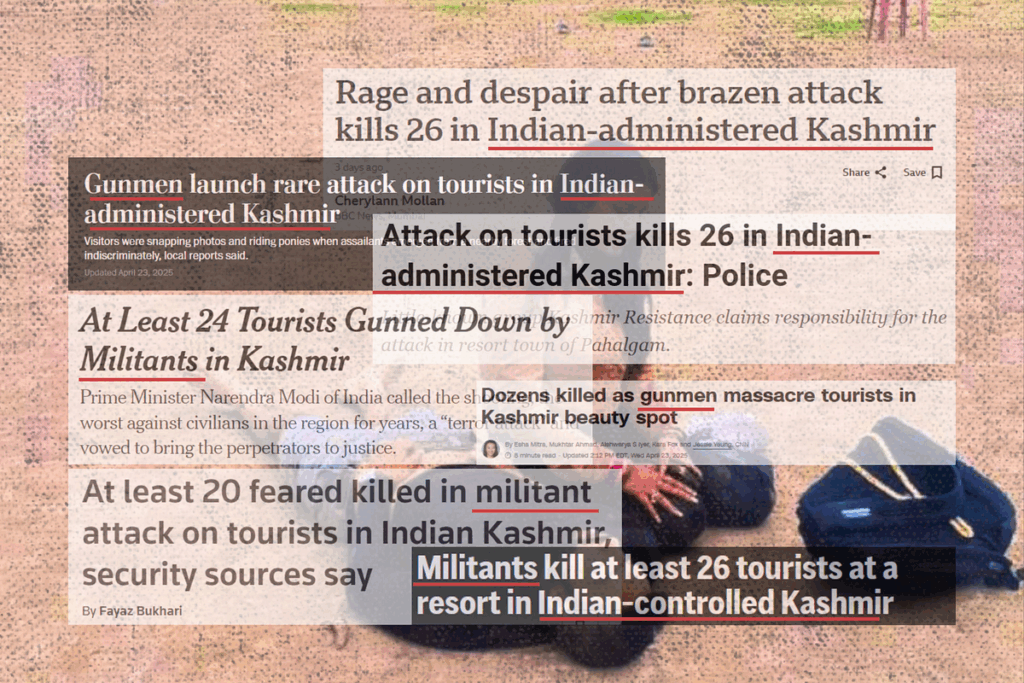
This pattern wasn’t accidental. It reflects an editorial hesitancy — a calibrated refusal to label Islamist violence against Hindus for what it is. Contrast this to how Western outlets immediately characterize attacks in Paris, London, or New York: perpetrators are “terrorists,” and victims’ identities and motives are reported with clarity and outrage.
The Times of India put it bluntly: “Why does Western media love to call terrorists ‘gunmen’ when Hindus are the victims?” (Times of India, April 2025).
Erasing the Victims
Another grievous media sin lay in the erasure of the victims’ identities. The BBC, AP, and NYT referred to the victims simply as “tourists” or “non-Muslims,” scrupulously avoiding the mention that nearly all were Hindus (Firstpost, April 2025).
Suhag Shukla, Executive Director of the Hindu American Foundation (HAF), called this “a masterclass in whitewashing, gaslighting, false equivalencies, and revisionist history.” Speaking on Times Now, she explained that such euphemisms are not just insulting but dangerous: they obscure anti-Hindu hatred as a motive and erase historical patterns of targeted violence.
Hindu American Foundation slams Western Media for Whitewashing and Gaslighting the Islamist Terror attack by Pakistani terror group in India’s Pahalgam of Jammu in Kashmir. Bravo, @SuhagAShukla! We Kashmiris are used to Western Press shielding Islamist terrorists in reportage. pic.twitter.com/oSYR9N9lk3
— Aditya Raj Kaul (@AdityaRajKaul) April 24, 2025
Why this reluctance to name the victims? As critics argue, acknowledging Hindu suffering may complicate the dominant narrative of Kashmir as a purely oppressed region rather than one wracked by decades of Islamist terror aimed at cleansing Hindus from the valley.
Editorial Cowardice and Its Global Consequences
The problem runs deeper than individual headlines. It points to a systemic editorial cowardice in Western journalism: a reluctance to admit that Hindus, too, can be victims of religious bigotry and Islamist terror.
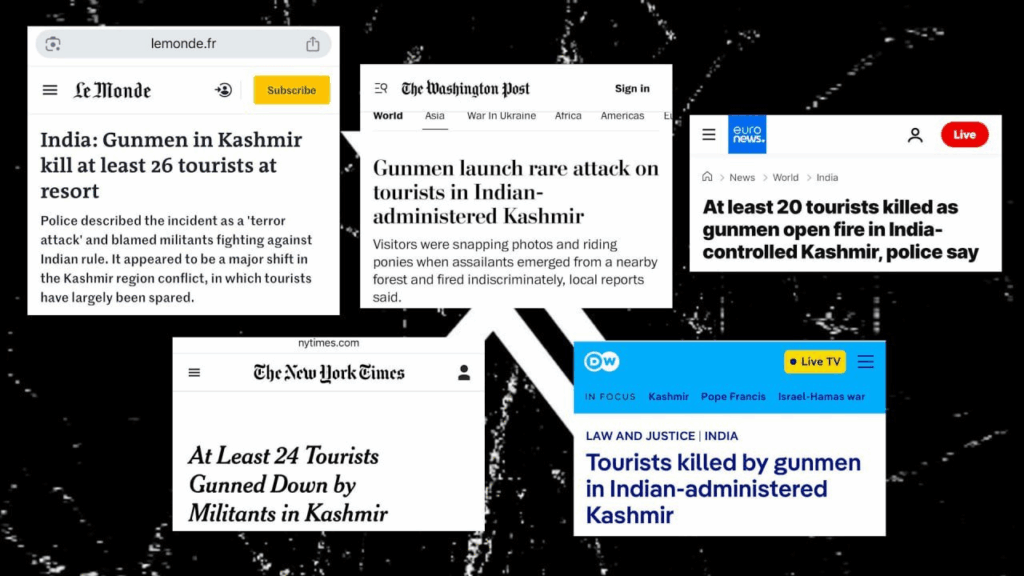
The Firstpost termed this behavior a “nihilistic negation of reality,” warning that “such editorial choices are a form of double killing” — physically erasing the victims and then morally erasing them by distorting the truth (Firstpost, April 2025).
To the western media – you have seriously undermined your credibiltity in the reporting of the attacks on Pahalgam. These should have been reported in the same manner, with the same accuracy, prominence and detail as the Mumbai terror attacks (26/11) and the Christchurch mosque…
— Naomi Canton (@naomi2009) April 25, 2025
Even American lawmakers took notice. The US House Foreign Affairs Committee publicly rebuked The New York Times for its framing of the massacre. In a powerful statement, they posted an edited NYT headline with “militants” replaced by “terrorists” — a small but crucial act of restoring dignity to the dead (Hindustan Times YouTube).
Hey, @nytimes we fixed it for you. This was a TERRORIST ATTACK plain and simple.
— House Foreign Affairs Committee Majority (@HouseForeignGOP) April 23, 2025
Whether it’s India or Israel, when it comes to TERRORISM the NYT is removed from reality. pic.twitter.com/7PefEKMtdq
Context: A History of Anti-Hindu Violence in Kashmir
The Pahalgam massacre isn’t an isolated horror. It is part of a grim continuum stretching back decades — from the ethnic cleansing of Kashmiri Pandits in the late 1980s and early 1990s to periodic terror attacks targeting Hindus ever since.
This history matters because denial today builds the conditions for future atrocities. The international community’s silence after the Pandit exodus taught extremists that Hindu lives would not provoke global outrage — a lesson reinforced with deadly consequences in 2025.
As the Times of India noted, “Flattening ideological motives and erasing victim identities is not neutrality; it is complicity” (Times of India, April 2025).
Why the Denial?
The Western media’s erasure is not rooted in malice alone; it reflects deeper biases and blind spots. There is an entrenched discomfort in recognizing Hindus — often stereotyped as part of a “majority” or “dominant” group in India — as vulnerable minorities in certain contexts.
Moreover, acknowledging Islamist terror against Hindus risks complicating the broader “oppressor-oppressed” narratives that have come to dominate Western media discourse. In these frameworks, the religious identities of perpetrators and victims are inconvenient truths.
Yet journalism’s first loyalty must be to facts, not ideology. It must be courageous enough to name suffering — even when the victims are unfashionable and the facts are uncomfortable.
The Price of Denial
The selective outrage and linguistic manipulation in the Western coverage of the Pahalgam massacre are not just moral failings; they are acts of journalistic betrayal.
When the media refuses to name terrorists, identify victims, or call out religious hatred, it does more than mislead. It sends a chilling message to the world’s extremists: some lives are expendable; some massacres are negotiable.
As the Firstpost concluded, Western media’s denial is “as monstrous as the terror attack itself” (Firstpost, April 2025).
To honor the dead in Pahalgam, and to preserve the integrity of global journalism, we must demand better — truth without euphemism, facts without fear, and memory without erasure.


